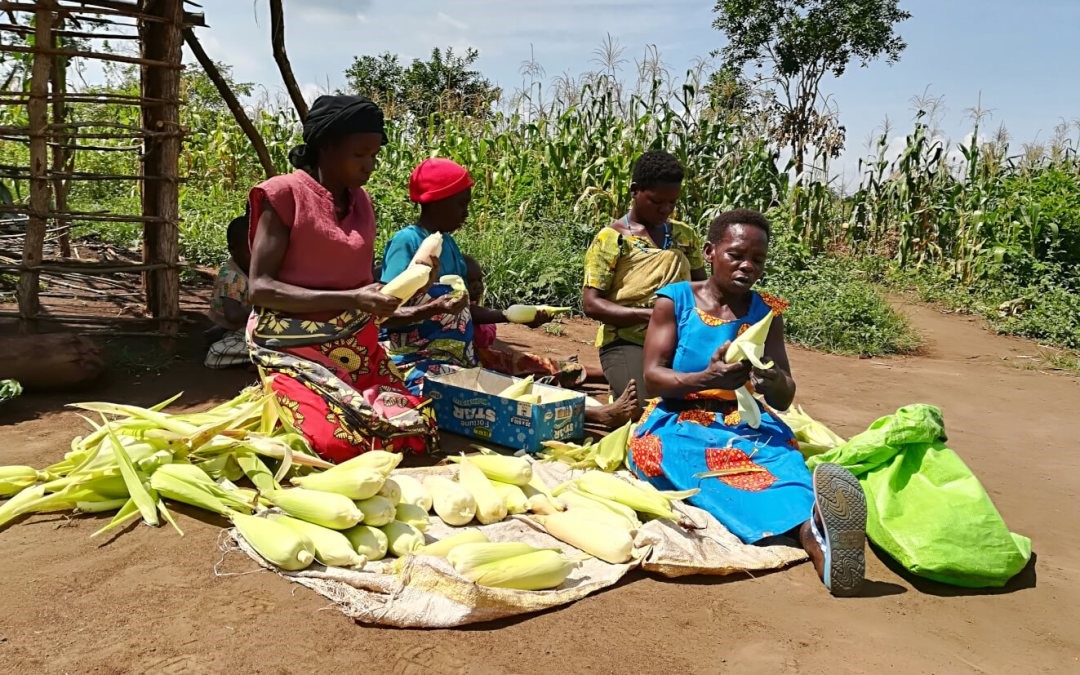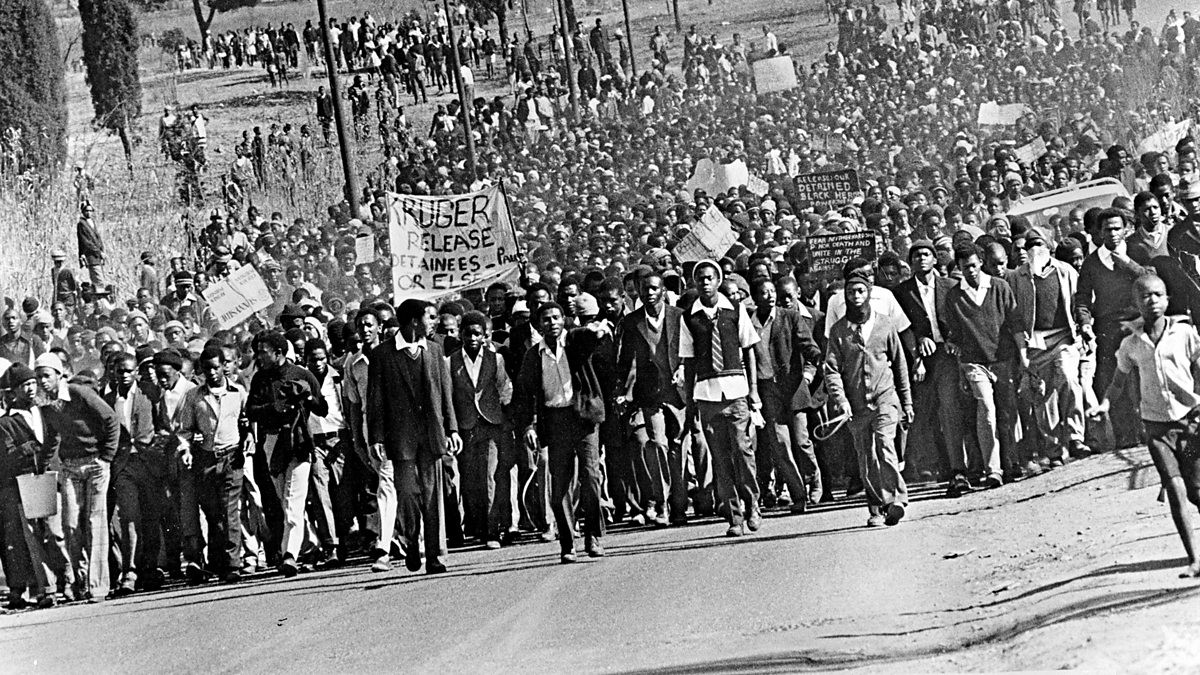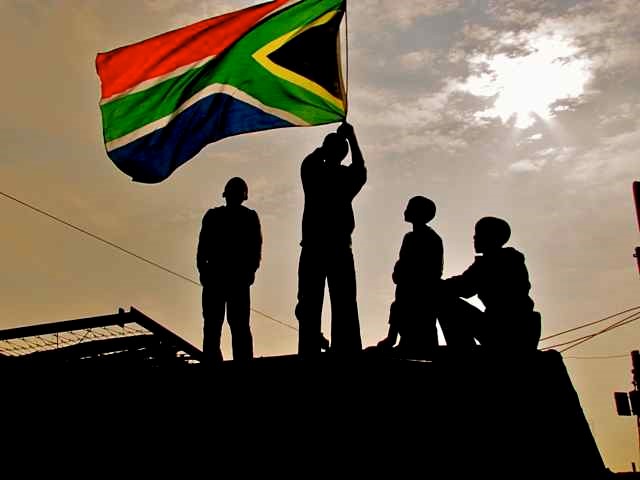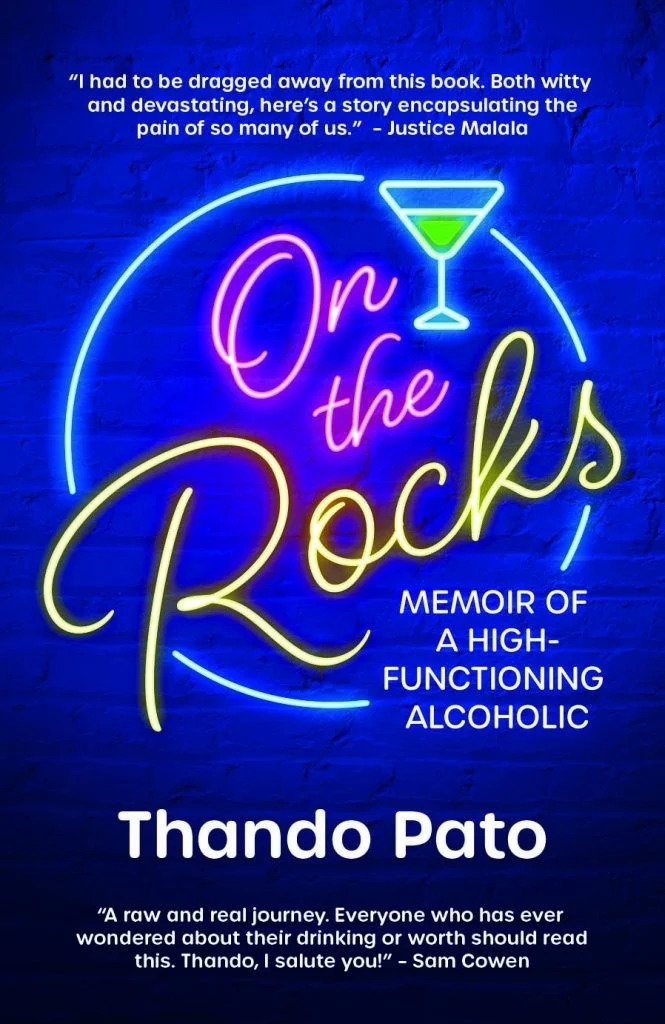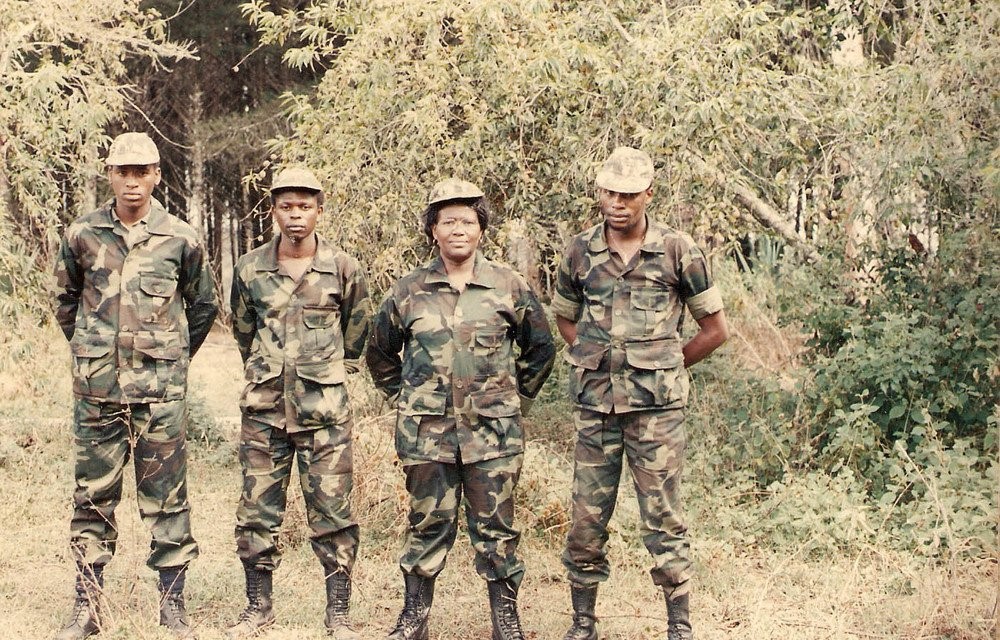“…[I]t is the curse of the body to remember when memory has faded away”. Sisonke Papu, inyikima
Not long ago Blick Bassy dropped a video1 for his hauntingly mournful “Ngwa” (meaning ‘my friend’, from Bassy’s mother tongue, Bassa); a diasporic cross-continental collaborative cinematic beaut directed by Tebogo ‘Tebza’ Malope, which sees Bassy bring to life one Ruben Um Nyobe, a man Bassy describes as a “trade union leader, orator, humanist and visionary.” Bassy emotively moves and remembers Nyobe as a martyr who was “hunted down by the [French] colonial army and butchered in 1958, his body buried in concrete to better erase his memory.”
We’re interested in talking and thinking about a lot of shit; about Black-as-prey, about the fugitive movement of being “hunted”, the Settlement’s army that hunts, the savage brute that “butcher[s]” Black/ened bodies, the parading of captured prey, the burying of memory/ies and commitment to ‘memorying’, the Prey’s posture to being hunted and its attitude towards defense and violence.
Framing Africa/ns
Historically, Africa emerges to the modern world (at least at a conceptual level) as a moment/place of disequilibrium, a vertigo, a whirling-to-nowhere. Thinking through this prism of a colossal emergence, therefore, one naturally struggles to create narratives of Africa/ns not in a crisis. In a recent inaugural research project by Africa Narrative titled “Africa in the Media”2, penned by Blakley et al (2019), the authors argue that U.S Media deliberately starves its viewership (in America and everywhere else where Hollywood reigns supreme) of African stories of “success, diversity, opportunity and vibrancy of Africa” by way of (mis)representing the continent and telling what Chimamanda Adichie once famously categorized as a “single story”3.
It is in this breath that the authors recognize an antidote; a “great opportunity”, and a “need”, to cultivate a culture of “telling more diverse stories about Africa’s 54 nations” by moving beyond the simple paternalistic-imperialistic gaze of “glib, simplistic, predictable, and sometimes sensationalist or extreme” ways of framing Africa. Though we recognize this as a progressive intervention within the global journalism/media community, this overvaluation of some positive African images (as if Africa is not a shit hole) and ‘diverse’ African narratives prevalent in Black bourgeois creatives’ circles is equally problematic and tends to crowd out other/alternative ways of framing Africa outside of the ‘negative’ (largely by West/US Media) and ‘positive’ (by childishly/naively optimistic Media people in Africa and the diaspora) dichotomy.
This is not to say there shouldn’t be any positive representations of Africa (great minds in Africa continue to contribute immensely to society) but rather to argue (1) that Africans must strive towards effectively representing themselves (both the overwhelming filth and the beauty that is this continent- but what does positive representation do for the people of Nyanga in Cape Town, for instance?) and (2), the effectiveness of such representations depend largely on politics; for as long as the pillage-plunder of the continent by Western imperialistic forces continues uninterrupted, the pejorative representation of Africa by the US/West will continue. In short, to end this misinformation/misrepresentation, one must, out of historical-political necessity, end the world both at a material (the ideal situation is not to present a positive image of Nyanga but to physically end all townships) and paradigmatic level. End the world, not planet Earth; the world, as Jared Sexton4 would say.
Moreover, one must ask why are we so drawn to these controlling but exhilaratingly ephemeral images of Africa as a space for dreaming and expression as well as moral rectitude outside of the gore and filth or shithole we in. Why are we so afraid of wallowing in the contradiction as esteemed philosopher Dr Frank Wilderson III intimates in an interview of the same title5? What are the emancipatory possibilities of such a ‘politicking’, if any? Framed in a different way, what is liberating about constructing supposedly liberating images when you are not liberated fully? If the tension between sociality and fungibility is to do with seeing colonial black life more expensively for its depth and fluidity, why glibly grope for sociality or some positivity established as the last image one sees in the video? We hasten to add, forcibly even, what is wrong with ending and leaving us to toil with our emotions while we gaze at the abyss of failed Cameroon reeling from the loss of a figure that could have been instrumental in the reawakening of the continent from its colonially approved underdevelopment? From where we stand we find two or more problems at the root of this problem. The first is the location of a voice of some well off, petty bourgeois, native elite from the mass media capitalist machine globally. The black elite intelligentsia of Africa seems to be invested in change in Africa without the volatility and birth pains that change has demanded in other parts of the global South. They, that is, the neoliberalism supporting African elite, want revolution without a revolution. The controlling image of an African success story and its attendant politics of respectability is mostly operationalized to frame Africa as a place of promise in order to share in the spoils of its continued butchering outside of disrupting the heart of colonial life itself. By this we mean constant stale images of some futuristic Africa sanitized for consumption in the global market of positive images does nothing but to keep poor Africans hungry while the complicit African elites who fashion these images feast on the crumbs this colonial horror show. This is a politics of erasure and silencing of the cries of slaves being whipped in the plantation. This politic is predominant in the continent. It constructs blacks as the “new slaves” as Kanye West once cautioned us in one of his more refreshing sober moments.
Black to the past: Ngwa against forgetting
Lets settle a few things: Disequilibrium is/can only be maintained through violence. Violence is a condition of possibility for the Settler’s equilibrium. Ruben Um Nyobe was murdered two years before Cameroon obtained its independence for the sole reason of threatening the Settler’s equilibrium. Lest we forget, Nyobe was instrumental in forming the Union des Populations du Cameroun (UPC)5, an organization which had a militant progressive orientation; it is important to ask why is it necessary to show Nyobe concealing his firearm in the sand while an armed enemy gains on him? As we alluded above, what sort of politics animates this gesture?
There are countless moments in the video where an obviously anxious yet composed Nyobe, played by Bassy, turns worriedly to the back; we see this when he first appears (brilliantly shot by Malope while overlooking the picturesque mountains of Lesotho, he turns and gazes at what we are invited to think of as pending danger), we also see this when he is chased by the colonial militia on horseback (he continuously looks back while running) up until the long-awaited moment where a spear pierces through his spine only to emerge right below his breasts in a bloody rush.
We’re interested in this ‘looking back’ as a moment of a dual ‘turning’: to (1) ‘check i-coast’, exercise caution, carefully sneak out, to escape one’s structural positionality of being Black-as-prey, to cut/carve an opening (in the hold) and escape (but not as a way of ‘getting out/away’ but as an opportunity to regroup and later engage in transgression, in fugitive planning), and (2), to look ‘back’ as a way of looking forward (not necessarily post-colonial Africa but those moments of anti-colonial resistance and collective dissent: after all, art critic Njabulo Zwane says “Black people’s attempts at self-actualisation have usually looked to the pre-colonial past. But because the roots of blackness lie in the routes that the people have traversed, from Tembisa and Timbuktu, we are confronted with the sad reality that there might be no peaceful beginning to go back to”6, disequilibrium!), to understand the past as it impacts on and haunts the present, to hark back, to remember and curse what poet Lesego Rampolokeng calls “willful amnesia”, or as Sisonke Papu puts it, to beg the body to remember to remember, always forward-looking through the past and hopefully look back in order to answer the question “where and when did we go wrong?”.
In ‘Ngwa”, a constant impulse juts out early on as you enter or immerse yourself into it. The impulse is suggestive of the Sankofa7 adage in West African philosophical culture. The story in a nutshell is best explained by what is referred to as the Sankofa bird. The Sankofa bird emblem is usually that of a certain bird that is in forward motion whilst simultaneously looking back. The bird’s body is contorted in such a way as to speak magnificently on the often-stated tension between the past and the present. This iconic image is mostly understood to be an invocation of some positive aspect of the past in order to welcome the uncertainty of the present as well as the future rooted in what the past has been and how it continues to structure the notion of what it is and could be with respect to its relation to the present.
This Sankofa motif plays itself as the fleeing away moment wherein Blick Bassy portraying Nyobe runs away from what is established early on as imminent danger from a battalion of spear wielding horsemen wearing metallic masks that conceal their faces. The turns he takes are to check how far is the enemy and how it is gaining on him and equally to draw some strength from the past. Therefore, the corollary questions can be thought in this manner: Can the past be the enemy itself? Or should one see a danger in “dwelling in the past too much” as liberals are wont to say or is it about allowing the past to snatch you and do what it pleases with you as is the case with the glibly invocation of the Solomon Mahlangu’s “my blood will nourish the tree that brings forth freedom”, in the last scene of an emotionally demanding cinematic intervention. The deeper question is how do the fleeting moments of looking back while fleeing work to make us refuse to see the present divorced from our painful past?
In conclusion
We’re interested in how the video oscillates between a politics of Black sociality and the destruction of the Black/ened body in Settler colonial societies. It posits itself as a meditation on the potentialities of a ‘woke’ consciousness rooted in history against the dangers of de-linking the contemporary struggles in the continent with those of yesteryear. The film, at times, seems to project an optimistic energy about the future of the continent through an attempt at a ‘positive’ presentation of Africa (this, we argue, is achieved by politically dangerous means- which refuse to present totally the brutalization of anti-colonial revolutionaries [in the hopes of humanizing Nyobe?]). For instance, this humanizing project is carried out in the last scene where Nyobe’s dead body is carried by the men on horseback in what resembles a funeral parade of a respected Stately person when he was probably dragged through dirt like Patrice Lumumba or Mu'ammer Gaddafi.
We charge that a different perspective to read the gaze is needed. In fact, the perspective is not even new. The gaze must just refuse to not see. The gaze must just see the gore and filth as if it’s seeing it for the first time though the image is boring and banal in its familiarity. This means one has to dwell in the hellish aspects of the image of a defeated Africa portrayed in a saddening manner by the bleeding corpse of Nyobe vanquished by a bloodied spear. The violent death of Nyobe beckons all of us to the abyss wherein our truest building blocks for a new Africa can come from. The fetish for an uplifting end often found in endings like the Nyobe transformation to a tree robs us of seeing the shortcomings of the humanist and morally uncorrupted constructions of our continued dehumanization, this then avails us to co-option by a world ready to accept a sanitized version of our collective suffering. The nature of our suffering ends up being analogized with that of other nations and nationalities while its particular nature remains outside the frames through which most understand human suffering.
Bolekaja!
Cava hier:
1 Blick Bassy, Ngwa
2 Blakley et al. 2019. Africa in the Media. Accessed here
3 Frank Wilderson, Wallowing in the contradiction Part 1 and
3 Frank Wilderson, Wallowing in the contradiction Part 2
4CPU: Check article here
Chimamanda Adichie’s TED Talk
6 Jared Sexton. 2011. The Social Life of Social Death: On Afro-Pessimism and Black Optimism. Access:
7 See Haile Gerima, Sankofa (1993). Check here





